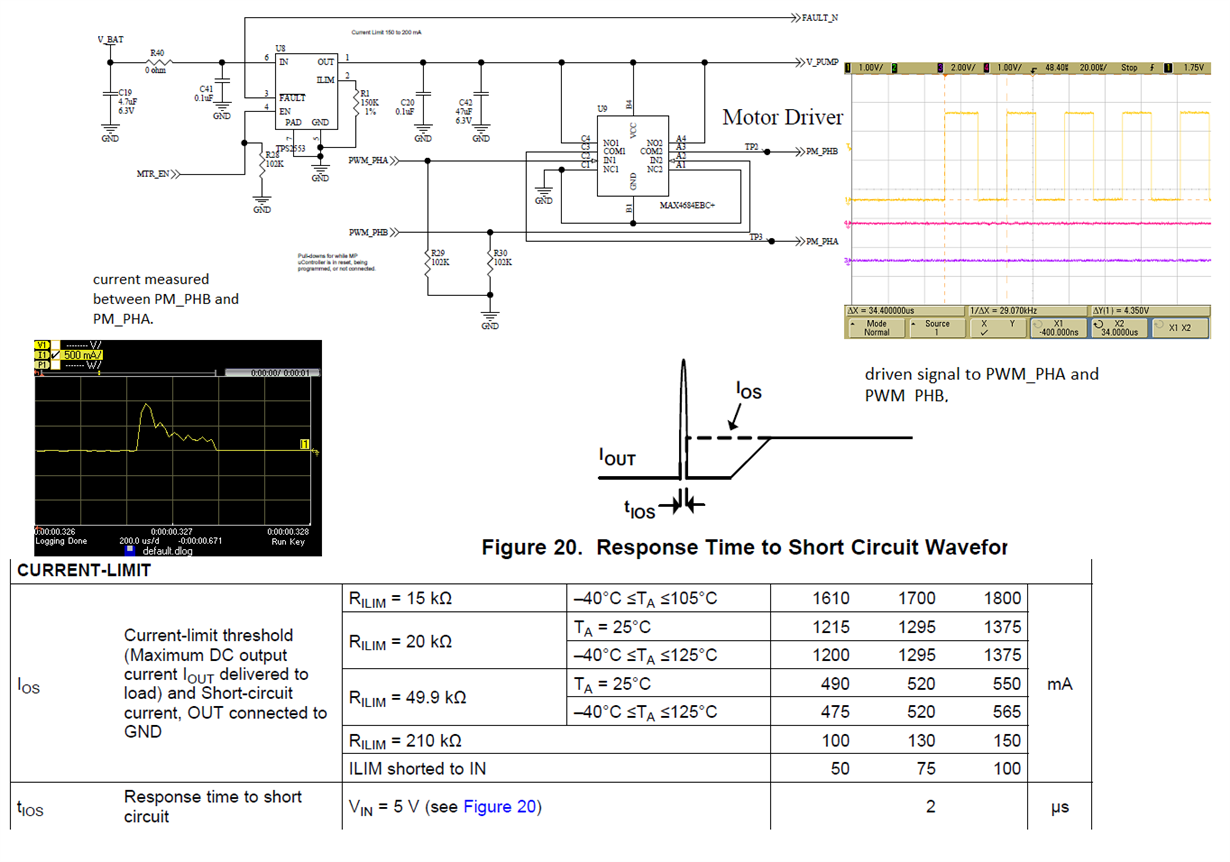Hello, Dear Expert.
I am using TPS2553 to protect a PWM driven motor. I did a test to emulate the motor short happen. I noticed that the TPS2553 response time is much longer than the data sheet.
per my understanding, after the output current over the Ios, which is around 180mA in my design. within tios ( 2us nominal) the output current will be clamped to Ios. in my measurement, the current went over 500mA for about 100 us.
the current is not measured right after the pin 1 of TPS2553, it is after a switch and about 5-inch wire. will the 47uF output CAP affect the response time.
how to measure the true response time of this TPS2553.
thanks,
David Sun


